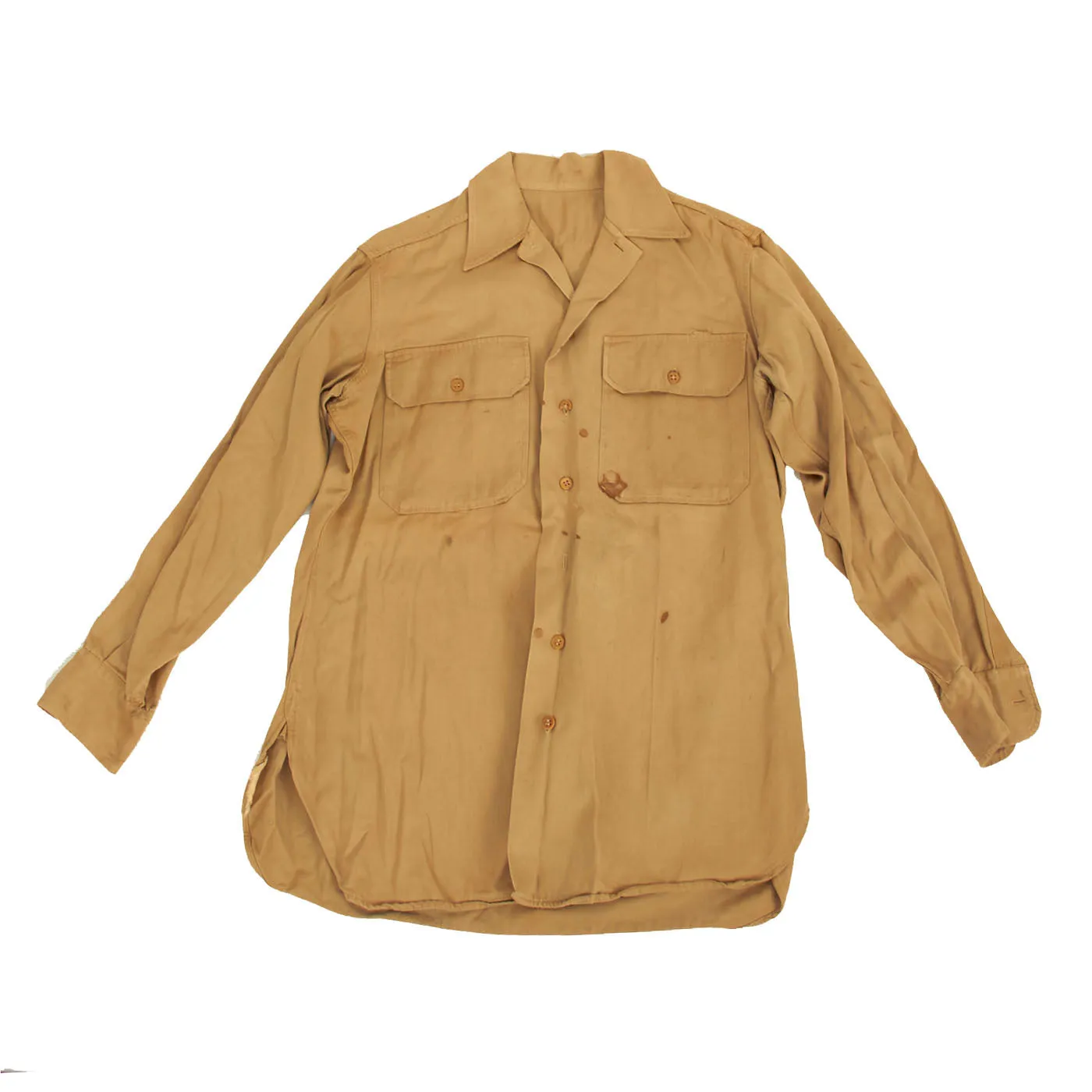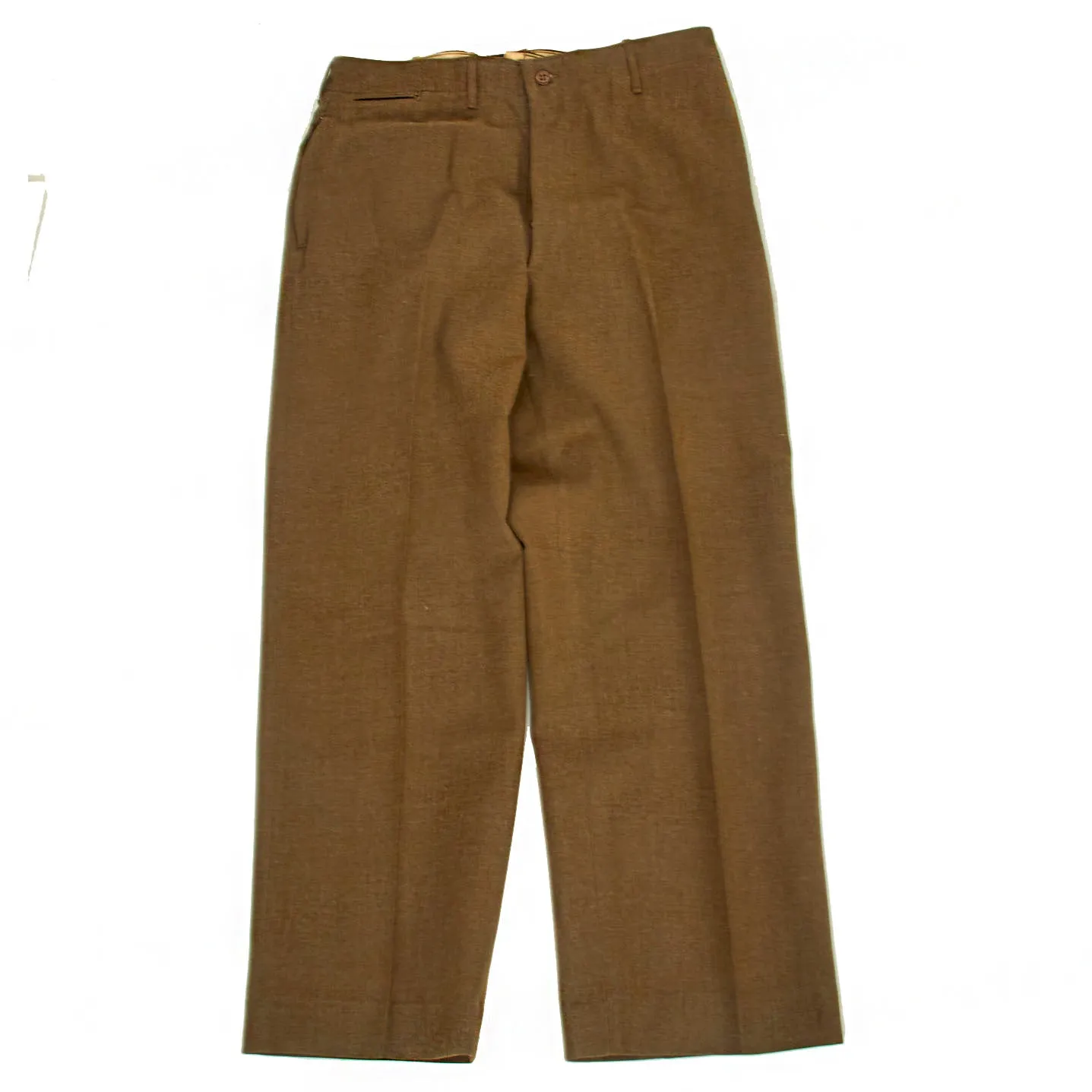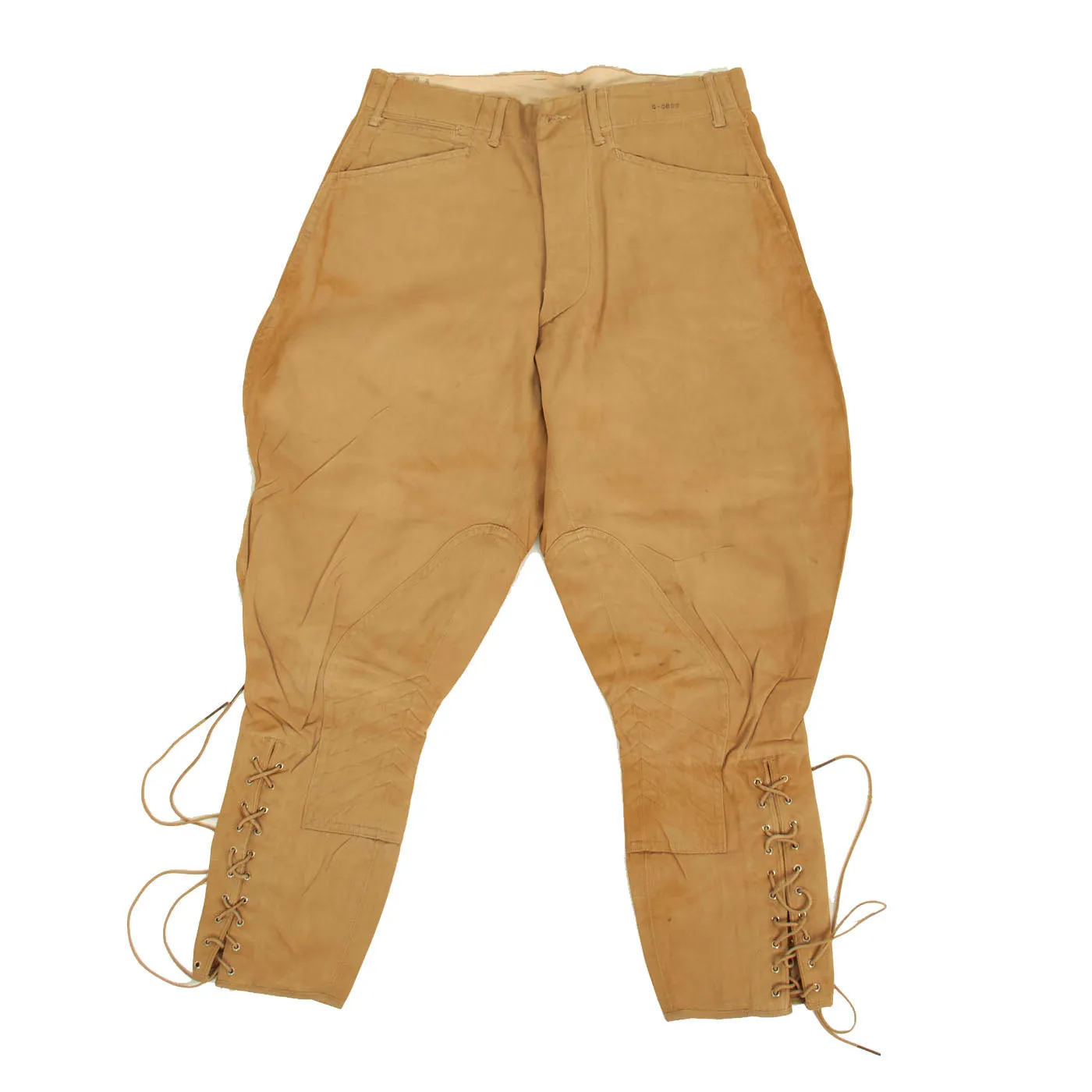



























































Original Items: Only One Lot of 11 Available. The United States Army in World War II used a variety of standard and non-standard dress and battle uniforms, which often changed depending upon the theater of war, climatic environment, and supply exigencies.
U.S. Army basic service uniforms consisted of a winter service uniform of olive drab wool worn in temperate weather, and a summer service uniform of khaki cotton fabric worn in tropical weather. In addition to the service uniforms worn for ordinary duty and dress purposes there were a variety of fatigue and combat uniforms. Summer and winter service uniforms were worn during their respective seasons in the continental United States. During the war, the European Theater of Operations (Northwestern Europe) was considered a year-round temperate zone and the Pacific Theater of Operations a year-round tropical uniform zone. In the Mediterranean Theater of Operations, U.S. soldiers wore both seasonal uniforms.
The enlisted men's winter service uniform in 1941 consisted of a wool serge four-button coat with four pockets in olive drab shade no. 33 (OD 33), wool trousers, and a long-sleeved wool shirt, both in olive drab shade 32 (OD 32). A russet brown leather belt with a brass buckle was worn with the coat until 1941, when it was dropped as a leather conservation measure, with the belt hooks on the coat being eliminated as well. Many enlisted men added belt hooks to their coats, and privately purchased their own belts; they can often be seen being worn long after the 1941 termination date. Shirts, which featured two patch pockets and no shoulder straps, were either OD 32 wool flannel or khaki cotton chino cloth. Either color of shirt could be worn under the coat, however, the cotton shirt could not be worn as an outer garment with the wool trousers when the coat was not worn. The initial shirt design had a stand-up collar like a typical dress shirt. In 1941, the shirt was redesigned with the collar band removed so the collar would lie flat when worn without a necktie in the field. In 1944, the color of the shirt and trousers was changed to OD 33.
In 1941, the necktie for the winter uniform was black wool and the summer necktie was khaki cotton. In February 1942, a universal mohair wool necktie in olive drab shade no. 3 (OD 3) replaced both previous neckties. The OD 3 necktie was shortly superseded by a khaki cotton–wool blend necktie. The khaki necktie was mandated for wear with both summer and winter service uniforms. Whenever a shirt was worn as an outer garment, the necktie was tucked between the first and second exposed buttons of the shirt.
The enlisted man's summer service uniform consisted of the cotton khaki uniform shirt with matching trousers; the issue of the coat for this uniform was discontinued for enlisted men in the 1930s. The necktie was tucked between the first and second exposed buttons of the shirt. Although originally used as a summer combat uniform as well as a summer dress uniform, after the invasion of the Philippines in 1942 the khaki uniform was largely replaced as a summer combat uniform by the herringbone twill utility uniform.
The peaked cap was discontinued for official issue to most enlisted soldiers after the end of 1941, but remained a popular item for private purchase. Thereafter, only the garrison cap in either olive drab for winter or khaki for summer wear with piping in the color of the soldier's branch of service was the designated enlisted service headgear. The soldier's distinctive unit insignia (DUI) was worn on the left front of the curtain if the unit issued one. However, after 1943 the manufacture of new DUIs under government contracts were suspended for the duration of the war.
The Uniform Items In This Lot:
- X2 Caps: Khaki enlisted visor, brown garrison cap.
- First US Army / 5th Army Class A Jacket: Good condition, missing buttons.
- 2nd Infantry Division Class A Jacket: Good condition, infantry cord on left shoulder.
- 1945 Ike Jacket: Good condition, “blank canvas”.
- SHAEF Khaki Officer’s Dress Jacket: Good condition, spent 3 years overseas.
- Khaki Dress Shirt: No insignia or devices present, staining present.
- x3 Pants: 2 pairs of jodhpurs and 1 pair of green wool trousers.
- Mackinaw Jeep Jacket: Good condition, minor wear and staining.
All items are in lovely condition and most of them have laundry numbers written/stamped on them, making for wonderful research opportunities. All come more than ready to complete displays!
Approximate Measurements:
1st / 5th Army Class A Jacket:
Collar to shoulder: 9.5”
Shoulder to sleeve: 24.5”
Shoulder to shoulder: 16”
Chest width: 19.5"
Waist width: 18”
Hip width: 21”
Front length: 33"
2nd ID Class A Jacket:
Collar to shoulder: 9.5”
Shoulder to sleeve: 22”
Shoulder to shoulder: 15.5”
Chest width: 17"
Waist width: 15”
Hip width: 18”
Front length: 31"
1945 Ike Jacket:
Collar to shoulder: 10”
Shoulder to sleeve: 23.5”
Shoulder to shoulder: 17”
Chest width: 16"
Waist width: 16.5”
Hip width: 16.5”
Front length: 24.5"
SHAEF Khaki Jacket:
Collar to shoulder: 10”
Shoulder to sleeve: 23.5”
Shoulder to shoulder: 17.5”
Chest width: 19.5"
Waist width: 19”
Hip width: 20.5”
Front length: 33"
Khaki Dress Shirt:
Collar to shoulder: 6”
Shoulder to sleeve: 22”
Shoulder to shoulder: 16”
Chest width: 21"
Waist width: 20”
Hip width: 19.5”
Front length: 30.5"
Khaki Jodhpurs Set 1
Waist:15.5"
Inseam:24"
Khaki Jodhpurs Set 2
Waist:14.5"
Inseam:21.5"
Green Wool Trousers
Waist: 18"
Inseam: 27"
